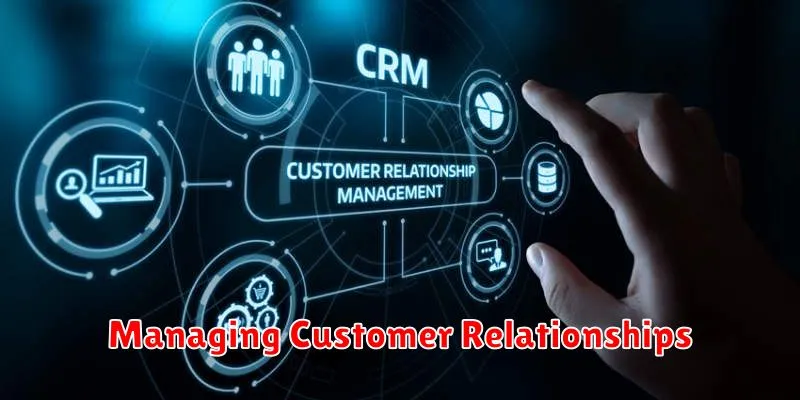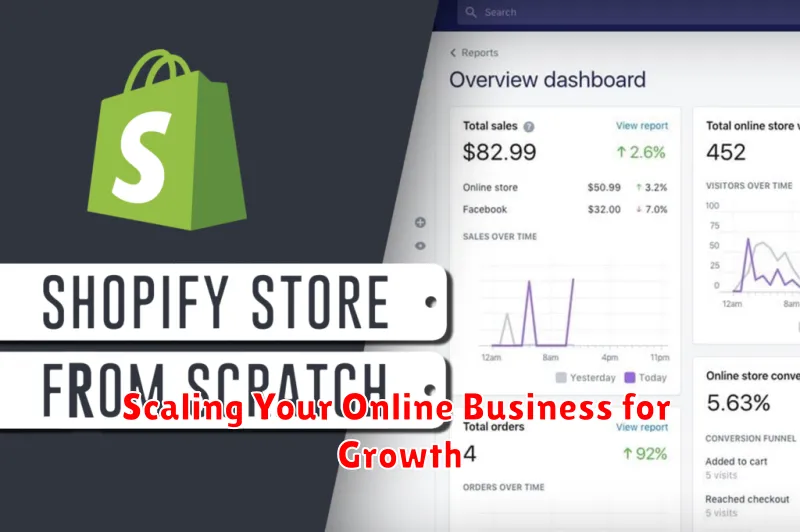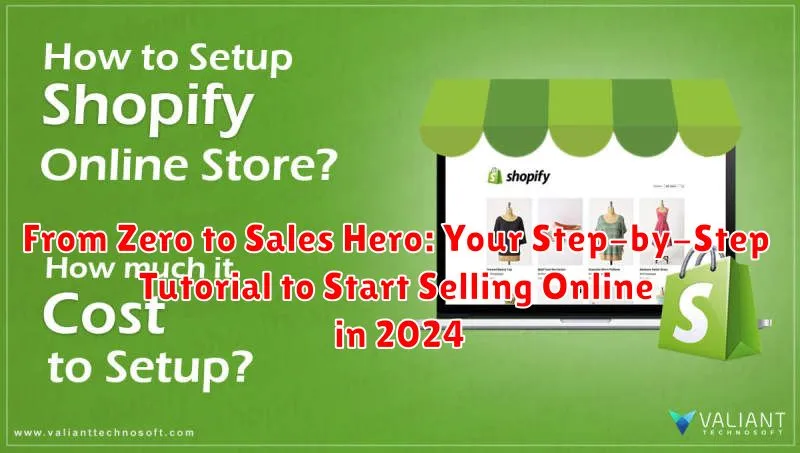Are you dreaming of becoming a sales hero in the competitive online marketplace of 2024? Do you aspire to launch your own online business and achieve significant sales success? This comprehensive, step-by-step tutorial will guide you from zero experience to online sales proficiency, providing you with the essential tools and knowledge you need to thrive. Whether you’re a complete beginner or have some experience, this guide will empower you to navigate the dynamic world of online sales and establish a profitable online business in 2024.
This tutorial, “From Zero to Sales Hero,” will equip you with the strategies necessary to start selling online effectively. We’ll cover crucial aspects of online selling, including selecting the right online business model, building a robust online presence, and mastering key sales techniques. Learn how to identify your target market, craft compelling product listings, and leverage powerful marketing strategies to drive traffic and convert visitors into loyal customers. This is your opportunity to transform from a novice to a sales hero in the digital age.
Choosing the Right E-commerce Platform
Selecting the right e-commerce platform is a crucial first step. The platform you choose will significantly impact your online store’s functionality, scalability, and ultimately, your success.
Consider these key factors when making your decision:
- Budget: Platforms range from free, open-source options to premium subscriptions with varying transaction fees. Carefully evaluate your startup capital and projected sales volume.
- Technical Skills: Some platforms require coding knowledge, while others offer user-friendly drag-and-drop interfaces. Choose a platform that aligns with your technical capabilities.
- Scalability: As your business grows, your platform should be able to handle increased traffic and inventory. Ensure your chosen platform can accommodate future expansion.
- Features: Different platforms offer different features, such as integrated marketing tools, analytics dashboards, and inventory management systems. Identify the features essential for your business.
Popular e-commerce platforms include Shopify, WooCommerce, Wix, Squarespace, and BigCommerce. Research each platform thoroughly to determine which best suits your specific needs.
Setting Up Your Online Store
Once you’ve chosen your e-commerce platform, the next crucial step is setting up your online store. This involves several key components to ensure a smooth and professional online presence. Think of this as building your digital storefront.
Choose a domain name that reflects your brand and is easy for customers to remember. A concise and relevant domain name is essential for branding and searchability.
Customize your store’s design. Select a theme that aligns with your brand aesthetic and provides a user-friendly experience for your customers. Consider factors like color schemes, fonts, and layout.
Organize your product categories logically to facilitate easy navigation for your customers. A well-structured product catalog is key to a positive shopping experience.
Configure shipping options. Clearly define your shipping zones, rates, and estimated delivery times. Transparency in shipping builds trust with your customers.
Finally, thoroughly test your store’s functionality before launching. Ensure all features, including the checkout process, are working seamlessly to avoid any issues after going live.
Sourcing Your Products
Product sourcing is a crucial step in setting up your online store. Choosing the right method will significantly impact your profit margins and overall success. Consider these popular options:
1. Manufacturing Your Own Products:
This offers the greatest control over quality and branding, but requires significant upfront investment and carries higher risk.
2. Wholesale Purchasing:
Buying in bulk from established manufacturers or distributors offers lower per-unit costs. However, it requires storage space and ties up capital in inventory.
3. Dropshipping:
This method eliminates the need for inventory management. You partner with a supplier who ships products directly to your customers. While it offers lower startup costs, profit margins are typically thinner.
4. Print-on-Demand:
Ideal for selling custom designs. Products are printed and shipped only after an order is placed, minimizing risk and upfront costs.
When evaluating suppliers, consider factors like product quality, production capacity, reliability, and pricing. Due diligence is key to a successful e-commerce venture.
Crafting Compelling Product Descriptions
Product descriptions are your silent sales representatives. They bridge the gap between browsing and buying, convincing potential customers that your product is exactly what they need. A well-crafted description can significantly impact your conversion rates.
Focus on benefits, not just features. Instead of simply stating “500GB hard drive,” explain the benefit: “Store thousands of photos and videos without worrying about running out of space.” Highlight how your product solves a problem or improves the customer’s life.
Use vivid language to paint a picture of the product in action. Engage the senses and evoke emotions. Consider your target audience and tailor your language accordingly. Are they tech-savvy or more casual? Adjust your tone to resonate with them.
Keywords are crucial for search engine optimization (SEO). Incorporate relevant keywords naturally throughout your descriptions to improve your product’s visibility in search results. However, prioritize clarity and readability for the customer. Don’t stuff keywords in awkwardly.
Formatting also matters. Use bullet points, short paragraphs, and headings to break up large blocks of text and make the information easily digestible. This improves readability and encourages customers to engage with the entire description.
Setting Up Secure Payment Gateways
Secure payment processing is crucial for building trust and converting sales. Choosing the right payment gateway is a critical step in setting up your online store.
Key factors to consider when selecting a payment gateway include transaction fees, supported payment methods, security features, and ease of integration with your e-commerce platform.
Popular and reliable options include:
- PayPal: A widely recognized and trusted payment gateway offering various features for buyers and sellers.
- Stripe: Known for its developer-friendly tools and robust security features, Stripe is a popular choice for businesses of all sizes.
- Square: A good option for both online and in-person transactions, offering integrated POS systems.
Carefully research each option to determine which best suits your business needs. Ensure the gateway complies with PCI DSS (Payment Card Industry Data Security Standard) for secure processing of customer payment information. Once you’ve chosen your gateway, follow the provider’s instructions for seamless integration with your online store. Properly setting up your payment gateway instills customer confidence and facilitates smooth transactions.
Marketing Your Online Store
Effective marketing is crucial for driving traffic and generating sales. A well-defined strategy helps reach your target audience and establish your presence in the competitive online marketplace.
Consider these key marketing channels:
- Search Engine Optimization (SEO): Optimize your website and product listings for relevant keywords to improve organic search rankings.
- Social Media Marketing: Engage with your target audience on platforms like Instagram, Facebook, and TikTok. Share valuable content and run targeted advertising campaigns.
- Email Marketing: Build an email list and send newsletters, promotional offers, and updates to nurture customer relationships.
- Paid Advertising: Utilize platforms like Google Ads and social media advertising to reach a wider audience and drive targeted traffic to your store.
Track your marketing efforts with analytics tools to measure performance and make data-driven adjustments to your strategy. Continuously analyze and adapt your approach to optimize your return on investment.
Building a Strong Brand Identity
A strong brand identity is crucial for standing out in the competitive online marketplace. It’s more than just a logo; it encompasses your values, personality, and the overall experience you offer customers.
Start by defining your target audience. Understanding their needs and preferences will inform your brand’s messaging and aesthetic. Develop a unique brand voice that resonates with them. Is it playful and informal, or professional and authoritative?
Your visual identity is equally important. Choose a logo that is memorable and reflects your brand’s essence. Select a consistent color palette and typography that convey the right emotions and enhance readability.
Finally, ensure your brand identity is consistently applied across all platforms, from your website and social media to packaging and customer service interactions. This consistency builds recognition and trust, essential elements of a strong brand.
Managing Customer Relationships

Effective customer relationship management (CRM) is crucial for long-term success in online sales. Building strong relationships fosters loyalty and encourages repeat business.
Communication is key. Respond promptly and professionally to customer inquiries. Utilize various channels, such as email and social media, to provide support and gather feedback.
Personalization can significantly enhance customer relationships. Address customers by name and tailor recommendations based on their purchase history. Consider implementing a loyalty program to reward repeat customers.
Handling complaints efficiently is essential. Address issues promptly and offer appropriate solutions. Turning negative experiences into positive ones can build trust and solidify customer loyalty.
Scaling Your Online Business for Growth

Once your online store has established a solid foundation, the next step is scaling for growth. This involves strategically expanding your operations to handle increased sales and customer demand while maintaining profitability.
Analyze your current performance metrics. Understanding your key performance indicators (KPIs) like conversion rates, average order value, and customer acquisition cost is crucial. This data informs where to focus your scaling efforts.
Explore automation opportunities. Automating tasks like order fulfillment, email marketing, and customer service inquiries can free up your time and resources for strategic growth initiatives. Consider using tools and software to streamline these processes.
Diversify your marketing channels. Don’t rely solely on one platform. Explore expanding to different social media platforms, search engine optimization (SEO), or paid advertising campaigns to reach a wider audience. Track the performance of each channel to optimize spending and maximize ROI.
Consider strategic partnerships. Collaborating with complementary businesses can expose your brand to a new customer base and expand your reach. Look for partnerships that offer mutual benefit and align with your brand values.

